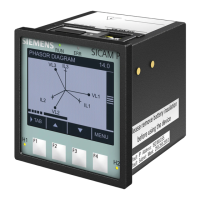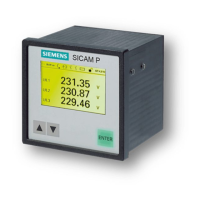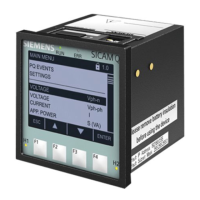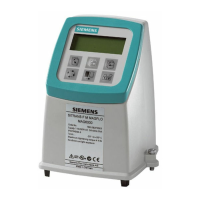9 Time Synchronization
9.1 General
236 SICAM P850/P855, 7KG85xx, Device Manual
E50417-H1040-C482-A6, Edition 10.2018
9.1 General
During operation, SICAM P850/P855 needs the date and time for all time-relevant processes. The term time
is used throughout this section to refer to both the date and the time.
The time synchronization in the SICAM P850/P855 is necessary to guarantee a common time basis for the
communication with peripheral devices and time stamping of the process data.
SICAM P850/P855 supports both external and internal time synchronization. The type of time synchronization
is specified during the parameterization (see chapter 7.3.6.1). The external time synchronization from an NTP
server is preferred.
9.2 Internal Time Keeping
9.2.1 Time Format
The internal time is kept in UTC (Universal Time Coordinated) from 01.01.2000, 00:00 to 31.12.2099, 23:59.
To display the local time, for example on the HTML pages, you can configure a local time correction factor and
the automatic adjustment to daylight saving time during parameterization (see chapter 7.3.6.1).
9.2.2 Status Bits
FAIL Status Bit
The FAIL status bit implemented in the SICAM P850/P855 signals with "0" that the time is valid and with "1"
that the time is invalid.
The status of the FAIL bit corresponds to the "Clock error" operational indication, see chapter 14.
The following table lists the time stamps of events or indications for the displayed operational and error logs
according to status bit set/not set using the example of date 2010-09-26, time 13:49.35246:
DST Status Bit
With "1", the DST status bit implemented in the SICAM P850/P855 signals that the local daylight saving time
is active. The operational indication "Daylight saving time" is displayed.
Tabelle 9-1 FAIL Status Bit for Time Synchronization via NTP Server
FAIL Output
0 2010-09-26 13:49.35:246
1 2010-09-26 13?49?35?246

